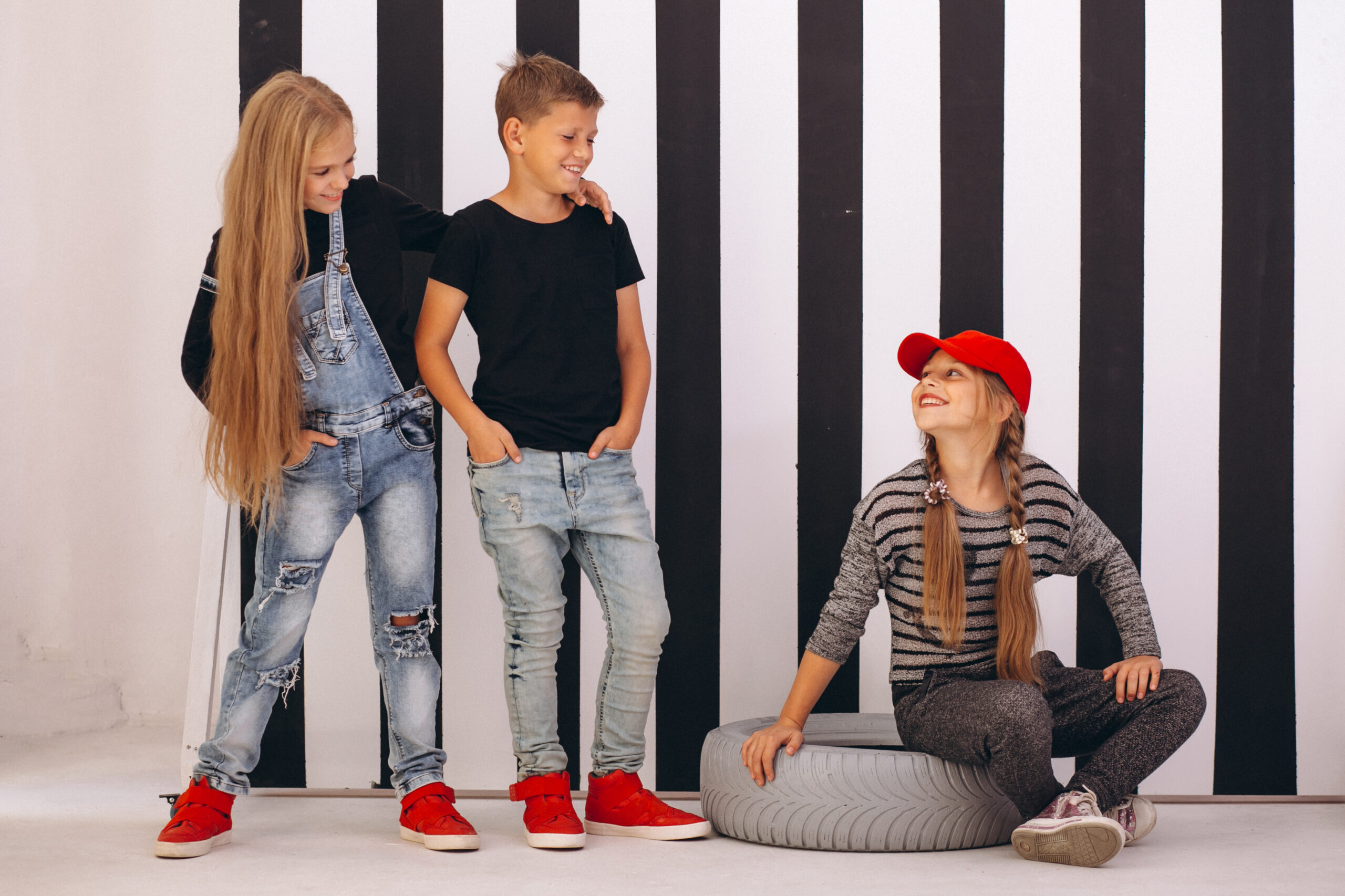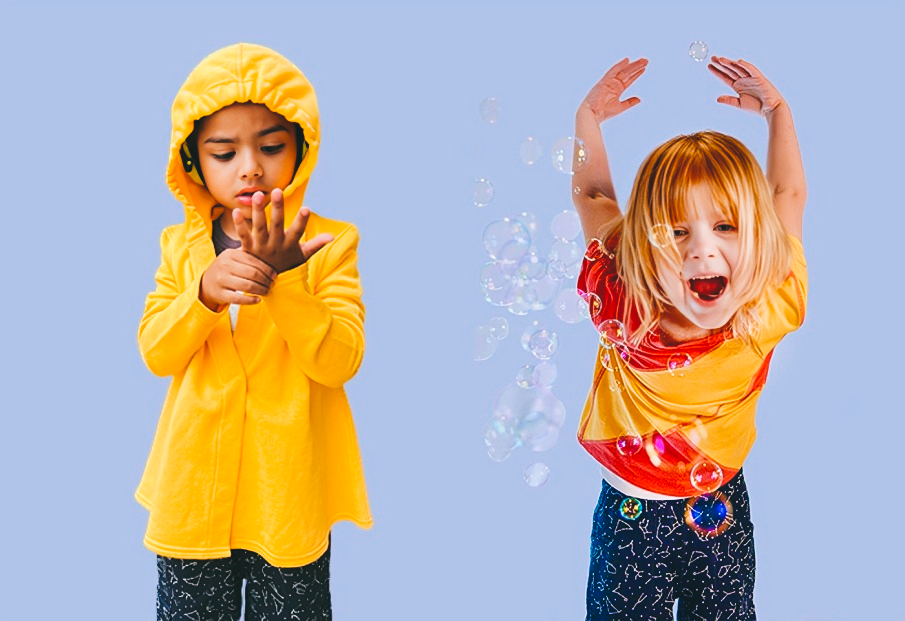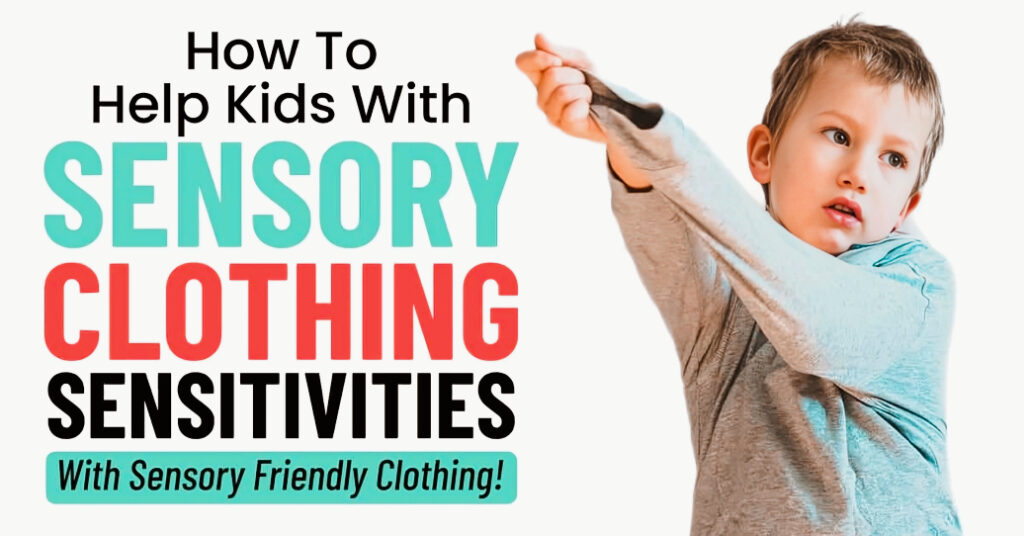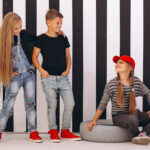Now Reading: Sensory Clothing for Kids: What Every Parent Needs to Know
-
01
Sensory Clothing for Kids: What Every Parent Needs to Know
Sensory Clothing for Kids: What Every Parent Needs to Know

Looking for sensory-friendly clothing for your kids? This guide simplifies the process of selecting the right fabrics, features, and brands tailored to children with sensory sensitivities. Discover what to look for in clothing to ensure comfort, reduce irritations, and boost your child’s confidence throughout the day.
Whether it’s autism, ADHD, or sensory processing disorder (SPD), certain fabrics, seams, or even clothing tags can make a simple task like getting dressed a real struggle for your child.
I’ve learned a lot along the way, and in this guide, I’ll walk you through how to pick sensory-friendly clothing that won’t cause discomfort and will help your child feel at ease in their own skin.
What Clothes Should You Choose for Kids with Sensory Sensitivities?
The number one thing to remember when choosing Sensory Clothing for Kids with sensory sensitivities is that it’s all about comfort. I’ve found that every child has their own preferences, but there are some basic principles to follow.
First : soft fabrics are your best friend. Look for materials like cotton, bamboo, and modal—these feel gentle on the skin and are breathable. I’ve personally found that these fabrics work wonders for my own child, who has sensory sensitivities. My child, like many others, dislikes clothes that feel rough or scratchy, and soft fabrics make a huge difference in their mood.
Second : avoid tags and labels. Trust me, no matter how small the tag might seem, it can feel like an obstacle for kids who are extra sensitive. Tagless clothing or printed labels are a game-changer.
Also, when it comes to seams, it’s best to look for clothes with flat seams or those designed without seams altogether. I’ve noticed that even the smallest bump in the fabric can feel like an irritation to kids who are sensory sensitive.
Top Fabrics for Sensory Clothing: Soft, Comfortable, and Gentle on the Skin
Choosing the right fabric can make or break a clothing choice for a sensory-sensitive child. In my experience, these fabrics have been the most successful for keeping my child comfortable:
- Cotton: Cotton is soft, breathable, and gentle on the skin. It’s also easy to find, so it’s a go-to fabric for sensory clothing.
- Bamboo: I recently tried bamboo fabric, and I was amazed at how soft it is. It’s also hypoallergenic and moisture-wicking, which is perfect for sensitive skin.
- Modal: Modal is a type of rayon made from beech trees, and it’s really silky and smooth. My child loves how this feels, and it doesn’t irritate their skin like some other materials.
- Jersey Knit: This fabric is stretchy and soft—perfect for active kids who don’t want anything too tight. It’s a great choice for t-shirts and leggings.

Which Products Should You Avoid When Shopping for Sensory-Friendly Clothes?
Not all clothing is created equal, especially for kids with sensory issues. I’ve learned that there are certain products you definitely want to avoid:
- Clothes with Tags: This is a big one. Even the smallest tag can be a dealbreaker. So, always go for tagless clothes or ones with printed labels.
- Rough or Stiff Fabrics: Wool and denim might be great for adults, but for kids with sensory issues, they can be uncomfortable. Stick to softer materials like cotton and bamboo.
- Tight Clothing: Tight clothing can be uncomfortable for any child, but especially for kids who are sensitive. I’ve found that stretchy, loose-fitting clothes work much better. They give your child the freedom to move without any restriction.
- Overly Bright Colors or Patterns: This one might surprise you, but some kids with sensory sensitivities may feel overwhelmed by bright colors or busy patterns. While it’s not always the case, if you notice that your child gets anxious or distracted by them, try opting for solid, simple colors.
How to Choose the Right Clothes for Kids with Autism and Sensory Processing Disorder
If your child has autism or sensory processing disorder (SPD), the clothing you pick can affect their whole day. I’ve found that these children often need clothes that don’t add to their stress. Here are some things I’ve learned:
- Look for Brands Specializing in Autism Clothing: Some brands cater specifically to kids with autism and sensory processing disorders. These brands understand the challenges kids with sensory sensitivities face and design clothes with those in mind.
- Stick to Soft, Natural Fabrics: Fabrics like cotton and bamboo are soft, breathable, and won’t irritate the skin. Natural fibers have always worked best for my child.
- Keep it Simple: When I’m shopping for my child, I’ve noticed that minimalistic clothing with fewer seams and distractions works best. Too much stimulation can be overwhelming.
- Try Adaptive Clothing: Adaptive clothing is designed to be easier for kids to wear and take off.

Sensory-Friendly Clothing Features Every Parent Should Know
If you’re unfamiliar with sensory clothing, you might wonder what features make clothing “sensory-friendly.” Here’s a quick rundown based on my experience:
- Soft Fabrics: Sensory-friendly clothing should feel soft against the skin, not rough or scratchy. It should be made of breathable fabrics that allow the skin to breathe.
- Elastic-Free Clothing: Many sensory-friendly clothes don’t have elastic in the waistband or cuffs. If they do, it’s soft elastic that won’t dig into the skin.
- Tagless Designs: This is a must-have! No itchy tags means your child won’t be distracted by discomfort.
- Stretchy, Comfortable Fits: The clothing should stretch and move with your child, especially if they’re active. Comfort is key, and clothes that stretch without feeling tight make a world of difference.
The Dos and Don’ts of Sensory Clothing for Kids: What to Pick and What to Avoid
Do’s:
- Look for soft, breathable fabrics like cotton, bamboo, and modal.
- Opt for tagless clothing or clothing with printed labels.
- Choose clothes with minimal seams or flat seams.
- Consider adaptive clothing if your child needs extra help getting dressed.
Don’ts:
- Avoid clothes with tags that can irritate your child’s skin.
- Don’t buy clothes that are too tight or restrictive.
- Stay away from rough fabrics like wool or stiff denim.
How to Build a Sensory-Friendly Wardrobe for Your Child
Building a Sensory Clothing for Kids wardrobe doesn’t have to be overwhelming. Here’s a simple way to get started:
- Start with the basics: Begin with essential items like soft t-shirts, leggings, and underwear made from sensory-friendly fabrics.
- Add layering pieces: Once you have the basics, add items like soft jackets, sweatshirts, or cozy pants.
- Don’t forget accessories: Hats, shoes, and socks should also be sensory-friendly. Choose soft, stretchy materials for these items as well.
The Importance of Sensory Clothing for Kids’ Comfort and Confidence
Sensory clothing isn’t just about comfort—it’s also about confidence. I’ve seen firsthand how much better my child feels when they’re comfortable in their clothes. When kids feel good in what they’re wearing, they’re more likely to participate, socialize, and feel at ease. Sensory-friendly clothing is an easy way to support your child’s emotional well-being and give them the confidence to take on the day.

FAQs
Look for soft, breathable fabrics, avoid tight clothes, and choose tagless options. Keep things simple and comfortable.
Sensory-friendly clothing uses soft, comfortable fabrics, flat seams, and tagless designs to reduce irritation and discomfort.
Yes, many kids with ADHD experience sensory sensitivities, making it important to choose clothing that’s soft and non-restrictive.
Brands like SmartKnitKids, Gravity Blankets, and Kyte Baby offer sensory-friendly clothing designed for kids with ADHD, autism, and sensory processing issues.
Wrapping Up & Taking Action
Choosing sensory-friendly clothing can make a huge difference in your child’s life. Comfort, confidence, and happiness are all tied to how well they feel in their clothes. Start by finding the right fabrics and features, and soon you’ll have a wardrobe that works for them.e right fabrics and features, and soon you’ll have a wardrobe that works for them.

Theo Whitman is a U.S.-based fashion and textile journalist. He explores global style trends, fabric innovation, and the cultural impact of design, bringing readers fresh perspectives on fashion’s evolving world.
Stay Informed With the Latest & Most Important News
Previous Post
Next Post
-
 01Happy Gilmore 2: Your Complete Guide to the Golf Comedy Sequel
01Happy Gilmore 2: Your Complete Guide to the Golf Comedy Sequel -
 02Joe Root’s Test Runs: England’s Batting Genius in Focus
02Joe Root’s Test Runs: England’s Batting Genius in Focus -
 03The Bad Guys 2 (2025): Everything We Know So Far
03The Bad Guys 2 (2025): Everything We Know So Far -
 04RTX 50 Series Unleashed: Next-Gen Gaming Power Awaits!
04RTX 50 Series Unleashed: Next-Gen Gaming Power Awaits! -
 05Demon Slayer: Kimetsu no Yaiba The Movie: Infinity Castle Tickets – Your Guide to the Epic Anime Event
05Demon Slayer: Kimetsu no Yaiba The Movie: Infinity Castle Tickets – Your Guide to the Epic Anime Event -
 06The Naked Gun 2025: What to Know About the Comeback Comedy Starring Liam Neeson
06The Naked Gun 2025: What to Know About the Comeback Comedy Starring Liam Neeson -
 07Sensory Clothing for Kids: What Every Parent Needs to Know
07Sensory Clothing for Kids: What Every Parent Needs to Know














